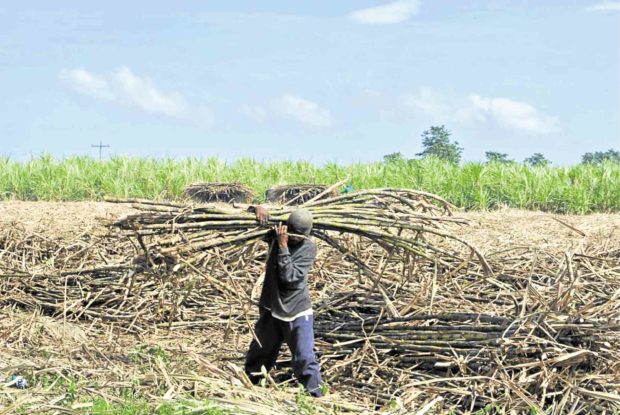PH descent from sugar exporter to importer: What happened?

In the past, the Philippines was a sugar exporting country.
At the height of exportation, 20 percent of all Philippine agricultural products being shipped to other countries is sugar.
But from being a sugar exporter, the Philippines is now a sugar importer.
There are many reasons, or factors, that led to this negative development.
First is the low cane yield which now averages less than 60 tons per hectare. Compare that with Thailand’s 70 tons per hectare, Australia’s 100 tons per hectare, Brazil’s 80 tons per hectare and Colombia’s 140 tons per hectare.
The people should immediately demand an increase in cane yield.
Majority, if not all, sugarcane growers want this but what is motivating them against increasing cane yield to stop importing from other countries?
The answer would lead us to the second reason—low sugar recovery (sugar yield per ton of cane).
Thailand has a sugar recovery of 2.1 bags per ton while Australia and Brazil have 2.6 bags per ton.
Many cane varieties in Thailand have parentage traceable to the Philippines so it leaves out varieties as the culprit. The Philippines also uses Australian varieties in developing commercial sugarcane breeding.
Sugar mill data show that only five of 28 sugar mills in the Philippines yield a sugar recovery, on the average, of 2 bags or more per ton of cane milled. The 23 other mills have lower yields. Some even have only 1.3 to 1.5 bags per ton of cane in recovery.
Increasing sugarcane yield comparable to Thailand requires addressing not only farm level cane yield constraints but also mandating that the 23 other sugar mills improve their sugar recovery rates.
A value chain study showed that farmers would invest P2 to increase yield to 80 tons per hectare or more while the mill spends less than P1.
Sugar production starts in the field, through the plant leaves in the process of photosynthesis. But farmers will not invest on productivity enhancing measures, like machinery, irrigation, fertilizers, if they cannot recover their expenses which are made up of variable and fixed costs.
At least 1.8 to 2.4 bags per ton of cane (on a 65:35 planter: miller sharing scheme) will enable the farmers to recover their expenses, and motivate them to improve their agricultural practices.
It simply means there should be simultaneous and complementary improvement in both stages of sugar production—farm level cane growing and cane processing in the mills.
Importing 5 tons of sugar displaces one sugar farmer and two partner-workers in the farm. Importing 250,000 tons of sugar, which is above the 30,000 maximum allowable volume under World Trade Organization (WTO) rules would directly affect 50,000 farmers and 100,000 farm workers.
On the ground, this means less work available, leading to many idle working days or at least 5.5 million working days that translate to some P2 billion in lost wages for farm workers and less money circulating in the rural economy.
The Sugar Industry Development Act, endowed with an allocation of P2 billion per year in the annual national budget, should be fully utilized. Under the current situation, only 25 percent of funds provided for the law’s implementation is being used. Why?
There is a considerable amount of money that can be tapped to simultaneously improved cane yield to 80 tons per hectare or more and sugar recovery by mills to at least 2 bags or more.
In the first year, two mills would be tested with 10,000 hectares for each milling district. Success in the pilot tests can serve as basis for private bank financing to improve mill and farm production in the second, third and fourth year until all mills had been covered.
(Teodoro Mendoza, PHd, is a retired professor in the Institute of Crop Science, College of Agriculture and Food Sciences at UP Los Banos. He taught Sugarcane Agronomy for 40 years and did a lot of research related to sugarcane production)














